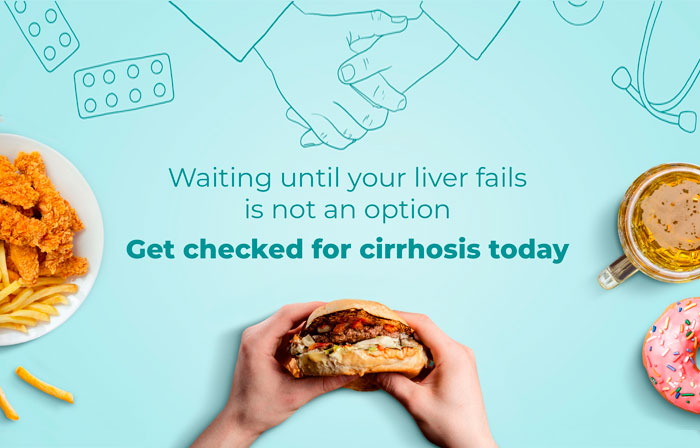Cirrhosis is a chronic disease that affects the liver. It results from progressive fibrosis, a process through which the liver accumulates scar tissue produced after recovering from injuries, infections, and overwork. This deteriorates the normal flow of blood through the liver and diminishes the capacity of the human body to perform vital functions, such as filtering toxins from the blood, regulating glucose, and producing substances that are critical for digestion.
One of the major risk factors for developing liver complications is excessive and repetitive alcohol abuse, affecting between 20% to 40% of heavy drinkers. Other major risk factors include diabetes, obesity, injecting drugs with shared needles, and having unprotected sex that could lead to hepatitis infection.
Although cirrhosis is not the same as liver cancer or hepatitis, these three diseases are interrelated and often occur simultaneously. Similarly, while cirrhosis is not a hereditary disease, it may be caused by hereditary disease that cause liver damage.
Cirrhosis affects about 1 of every 400 people and accounts for almost 2% of annual deaths in Europe. It cannot be reversed, which means that the damage that is already done to the liver is permanent.
Eventually, a failing liver may become a life-threatening condition. But with early detection and management, you can slow down or stop the progression of liver diseases and avoid complications related to a malfunctioning liver.
How to know if you have cirrhosis
Liver disease is often called a “silent killer”, as symptoms in the early stages are very general and could easily be mistaken for symptoms of many other illnesses or less severe ailments. However, as liver function gets worse, other more commonly recognized symptoms or signs of cirrhosis appear. These include yellow colouring in your skin and eyes (jaundice); swelling (oedema) in your legs, feet and ankles; fluid buildup in your abdomen (ascites); easy bruising and bleeding; memory loss, and cognitive dysfunction.
To diagnose cirrhosis, your doctor will assess your liver health based on your medical history, use of alcohol or injectable drugs, and a physical examination looking for any signs and symptoms. He/she will also order blood tests to check for signs of liver damage (levels of proteins, enzymes, bilirubin, iron, sodium, among others), infections, and autoimmune antibodies. A complete evaluation will also include imaging tests to see the size, shape, texture, and stiffness of your liver, such as computerized tomography (CT) scans, abdominal ultrasound, and magnetic resonance imaging (MRI).
However, one of the most effective ways to assess fibrosis in your liver is transient elastography (TE). This is a recently developed, non-invasive imaging method that uses ultrasound to measure liver stiffness. TE can be easily performed at the bedside or in the outpatient clinic with immediate and accurate results, which allows avoiding unnecessary liver biopsies.
Waiting until your liver fails is not an option. Book an appointment to get checked for cirrhosis with us today.


